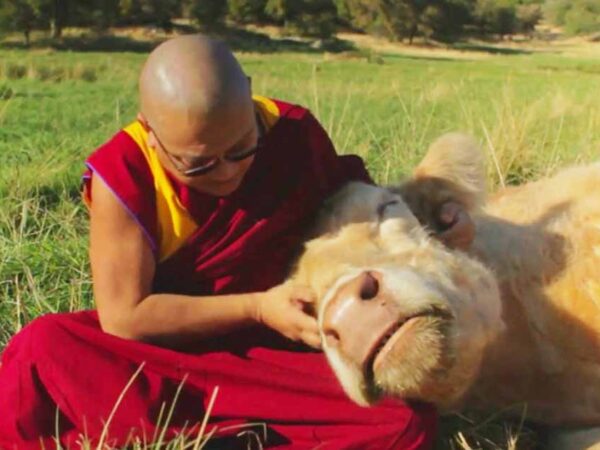KAYANUPASSANA SATHI
THE OBJECT OF MINDFULNESS OF BREATHING.
Before embarking on the Mindfulness of Breathing, the object of the exercise should be identified. The Meditator should engage himself in moral purification (Sila) worship the Triple Gem and protects himself, relaxing his mind and body.
As the body feels relaxed, the mind which possesses tremendous power also feels relaxed. The Meditator then should be conscious of the inhalation and exhalation process.

Diagram 01
Then the Meditator would be able to visualize the point of contact of the inhalation or exhalation breath. In some Meditators the point of contact would be the middle of the nostril. In others, the tip of the nose or the upper lip. In others, the point of contact would be the middle or tip of the right nostril. The point of contact of the breath would depend on the position of the Meditators’ nostril. Please see diagram 2.
1.So satova assasati satova passasati
The first form of the Mindfulness of the body process of ‘Kayanupassana’ – ‘Satipattana’ in the Mindfulness of breathing or ‘Anapana Sathi’. The world comprises three parts ‘Ana’ – ‘Apana’ – ‘Sathi’. ‘Ana’ means inhaling or breathing in. ‘Apana’ is exhaling or breathing out. ‘Sathi’ means mindfulness or contemplation. This means meditation being mindful of inhaling and exhaling. In other words, inhaling and exhaling are centred on the nose. Mindfulness of breathing meditation is being conscious of these two processes. Examine diagram 01.

Diagram 02
Some Meditators contemplate on the rise and fall of the abdomen. This is not an advisable form of meditation. We are aware that the abdomen rises and falls with inhalation and exhalation. The chest moves in a similar manner. In the mindfulness of breathing process concentration is on the nose eliminating the abdomen and chest areas.
If the Meditator does not feel any of these sensations, he should place the outstretched fingers of his right hand so that they do not touch his nostrils and commence inhaling and exhaling. He would then feel the breath touching his fingers. Please see diagram 3. The mind identifying the point of contact of the breath is the object of the mindfulness of breathing process. The Meditator should concentrate his mind on this breathing process and continue to proceed ahead.
II. Digham va assasanto digam assasamiti pajanati Digham va passasanto digham passasaniti pajanati
 He experiences ‘concentration’ ‘Samadhi’of his mind in the first step. The Meditator keen to continue to meditate further will train himself in the second step of mindfulness of breathing.
He experiences ‘concentration’ ‘Samadhi’of his mind in the first step. The Meditator keen to continue to meditate further will train himself in the second step of mindfulness of breathing.
1. One who takes a deep breath realizes that he is breathing (inhaling) deeply.
2. One who exhales deeply realizes that he is exhaling deeply.
The Meditator engaging himself in the mindfulness of breathing meditation concentrates his mind on inhaling and exhaling deeply.
Third Step
The Meditator having trained himself in the second stage does not stop there. He continues to meditate – concentrates on meditation.









